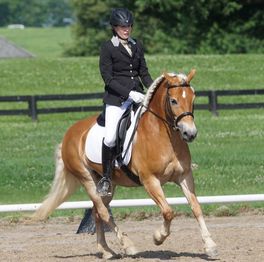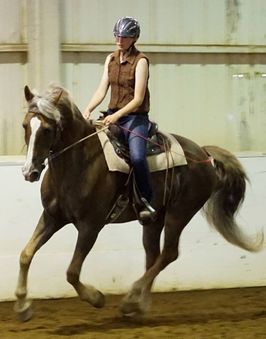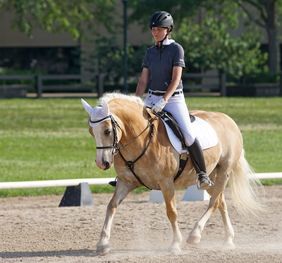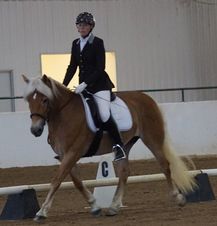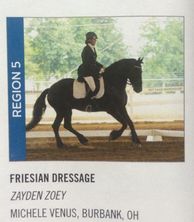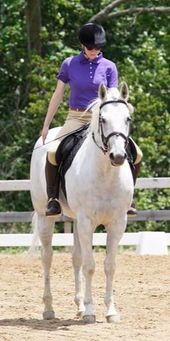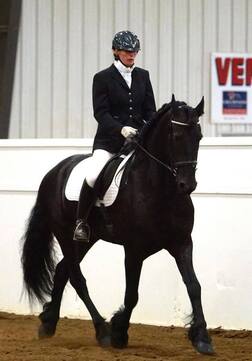
Welcome to Cessna Stables, owned and operated by Shannon and Erik Cessna! I would love to tell you a little bit more about us! I (Shannon) am the instructor/trainer at Cessna Stables. I was bitten by the horse bug in high school, 20-cough-some years ago. I began riding western in 4H. However within a couple of years it just so happened that the Royal Lippizaner Tour came to town and actually stayed for a couple days at the barn where I was taking lessons. This was my first intro to dressage and I fell head over heels for it. So I made the switch to english and even did some jumpimg. By this point I was in college but realizing that horses were my true passion. One day as I was looking at horse stuff on the internet instead of doing my homework I stumbled upon the Robert Mayer Riding Academy. I went for an interview and with in a month I had quit college (sorry mom) and was doing horses full time. I was an apprentice of Robert Mayer (German Bereiter), as well as student of his daughter - Alexandra Mayer, for 4 years. It's only in hind sight that I realize how fortunate I was to have actual honest to goodness Classical (German) dressage training. His program was run just as an apprenticeship is done in Europe - hours and hours of hands on training in all aspects of equestrianism. He taught us both on and off the horse, through lessons and theory, the principles of Classical Dressage according to the German system. The first priority was development of the seat, on and off the lunge, and of course quiet, effective hands. Followed, as soon as abilities allowed, by learning to create correct contact, a swinging back, and a correct topline via learning not only how to put the horse "on the bit" but much more so to be able to consistently demonstrate that the contact was correct by demonstrating "down and out" at all gaits, directions, etc. As the current USDF standards are very similar to the German system, we were well indoctrinated into the use of the training scale and the priorities of riding the horse forward and telescoping the neck in all work. I am thankful I had this opportunity to learn these basics in such a thorough and systematic way. That solid foundation has formed the base that has allowed me to branch out and find answers to questions in other seemingly different (on the surface anyways) training philosophies. However, the more I have learned about equine biomechanics, the more I realize that in every discipline and many different regions there are training methods that "fit the horse" and those that don't. I was fortunate to be introduced to Peter Campbell through a long time student of his and to clinic with him. He was a student of Tom Dorrance and was similar in his methods to Buck Branneman. This helped to open my mind to an entirely different aspect of training; that is considering the horse's mind and his ability to willingly participate in the training process - if he is given the opportunity instead of being dictated too. And that the results could be softer, more fluid, and more beautiful. Which led me somewhat full circle back to dressage but this time seeking the French influence. As such I have spent several years lessoning with Bettina Drummond. Who in many ways directed me back to some of my first learning from Robert. There really in nothing new under the sun in the horse world. I feel that my particular journey has given me a broader perspective and that my learning has been layered in a way that has helped me to see that for those seeking bio mechanically correct collection and partnership with their horse, the outfit may change but the horse (and what is true about physics, balance and horse bodies) doesn't.
Many assume (I think because of my interest in Classical Training?) that I do not show. While showing is not my first priority in life I have shown upwards of 30 different horses both recognized and otherwise. I have my bronze medal and respectable score averages on a wide variety of nontraditional breeds. I enjoy showing (and I am competitive) when I feel that the horse is well prepared for the experience. I am also perfectly happy teaching the rider who has no competitive ambitions whatsoever, so long is they are prepared to do their best for their horse. I have trained and ridden horses of nearly all different breeds including (but definitely not an exhaustive list) Haflingers, Morgans, Friesians (and crosses), Draft crosses, Quarter horses, Tb's, Arabians, Lippizan, Lusitano, and Andalusian as well as many others. But my favorite by far are the Iberian breeds - PRE/Andalusian and Lusitano. I am a (very) small breeder of PRE horses and I am always quick to encourage students in the Iberian direction.
Many assume (I think because of my interest in Classical Training?) that I do not show. While showing is not my first priority in life I have shown upwards of 30 different horses both recognized and otherwise. I have my bronze medal and respectable score averages on a wide variety of nontraditional breeds. I enjoy showing (and I am competitive) when I feel that the horse is well prepared for the experience. I am also perfectly happy teaching the rider who has no competitive ambitions whatsoever, so long is they are prepared to do their best for their horse. I have trained and ridden horses of nearly all different breeds including (but definitely not an exhaustive list) Haflingers, Morgans, Friesians (and crosses), Draft crosses, Quarter horses, Tb's, Arabians, Lippizan, Lusitano, and Andalusian as well as many others. But my favorite by far are the Iberian breeds - PRE/Andalusian and Lusitano. I am a (very) small breeder of PRE horses and I am always quick to encourage students in the Iberian direction.
